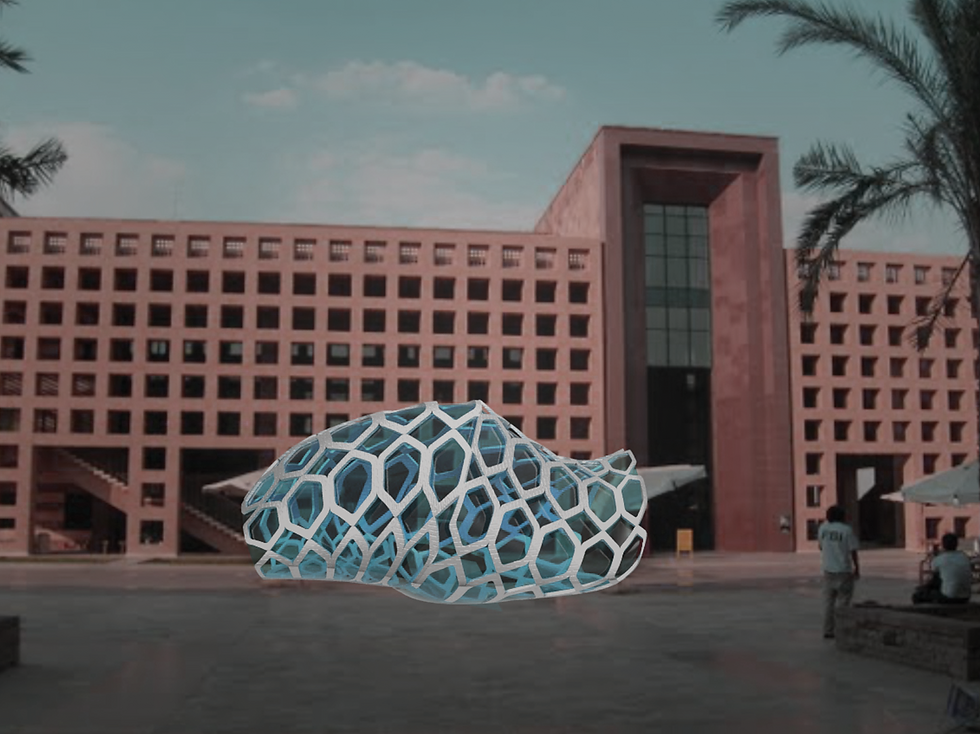
INFUSION - PAVILION
ARCHITECTURAL ENGINEERING (B.Sc) - AUC


Infusion is the process of extracting compounds in a solvent such as water, by allowing the material to remain suspended in the solvent over time. In this case, water from the plaza fountains on AUC grounds will be pumped through a double layer of transparent material throughout the entire pavilion, leaving the residue (AUC students‘ projects) suspended in the pavilion. The pavilion, therefore, emphasizes the projects being results emerging from the AUC ground.
Cairo, Egypt
Arts / Educational
Prof. Dr. Christian Bauriedel
Fall 2012
Advanced Computer Aided Design
Project Location:
Project Type:
Professor:
Semester:
Course Theme:

DESIGN PROCESS
STAGE I
A hexagonal grid was formed with sharp edges and then morphed onto a surface created on Rhino. The grid was transformed according to the surface with the help of Grasshopper. As a result, a complex structure was formed of various sizes and forms of a hexagon.
STAGE II
The form created by the edgy hexagonal grid lacked thickness of the beams and was also not giving the fluid-like feel to create with the pavilion. With the help of 3D Max I was capable of further enhancing my project and giving it the organic element it was missing.
STAGE III
Addition of materials on 3d max and rendering the model using Vray. A shot showing the steel structure and the Glass layers with water inside.





WATER CIRCULATION
The pavilion will be lit with water-filtered light which will enhance the experience of the visitors to the exhibition. Moreover, the water acts as a temperature buffer from the outside conditions which is needed to keep the models in the exhibition in optimum shape.
The groundwater fountains present in the plaza of the campus will be used to pump and circulate water through the pavilion. The double-layered glass will be strategically fitted to allow the water to be pumped through its gap.



FABRICATION
Steel structure holding the glass sections together to form the overall pavilion. The beams are perforated in the area between glass sections as to not block tyhe circulation of water being pumped throught the pavilion.
The hexagonal deformed glass sections will be formed of a double layer of corning willow glass, allowing for a gap in between for the passage of water.